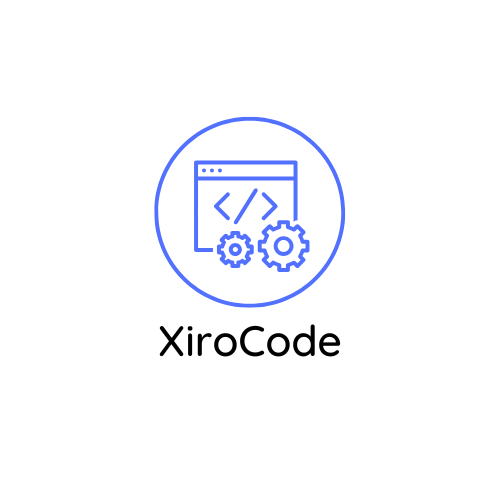In a world where technology rules, programming and software development are the secret sauces that keep everything running smoothly. Think of it as the magic behind your favorite apps, websites, and even that smart fridge that knows when you’re out of milk. It’s not just about typing lines of code; it’s about crafting experiences that make life easier, more fun, and sometimes, a little quirky.
Whether you’re a seasoned coder or just dipping your toes into the digital waters, understanding the ins and outs of programming can open doors to endless possibilities. From building robust applications to solving complex problems, the world of software development is a thrilling adventure. So grab your keyboard and prepare to dive into a realm where creativity meets logic, and the only limit is your imagination.
Programming and Software Development
Programming represents the foundation of software development, enabling the design and implementation of applications, systems, and products for various platforms. Developers write code using programming languages such as Python, Java, and C++, allowing them to create functionality, solve problems, and enhance user experiences.
Software development encompasses several steps, including planning, designing, building, testing, and maintaining software. Each phase plays a vital role in ensuring that applications meet user needs and perform effectively in real-world environments. Developers utilize frameworks and libraries to streamline processes, increase productivity, and maintain code quality.
Collaboration among team members enhances software projects. Groups often include developers, designers, project managers, and quality assurance specialists. Each member’s expertise contributes to the overall success of a project, allowing for diverse perspectives and solutions.
Agile and DevOps methodologies have gained popularity in recent years. Agile promotes iterative development and encourages team collaboration with constant feedback. DevOps bridges development and operations, aiming for continuous integration and delivery to accelerate the software lifecycle.
In addition, open-source software drives innovation and community involvement. By allowing access to source code, developers can contribute, customize, and share solutions. Popular open-source projects, like Linux and Mozilla Firefox, highlight the benefits of collaboration and knowledge sharing within the tech community.
When considering a career in programming and software development, numerous opportunities exist across various industries. From developing mobile applications to creating enterprise software solutions, professionals can influence technology’s future while enjoying a blend of creativity and logic.
Key Programming Languages

Programming languages form the backbone of software development, shaping how developers create applications and websites. Several languages stand out for their widespread use and adaptability.
Popular Languages Today
Python remains a top choice due to its simplicity and versatility, making it ideal for tasks ranging from web development to data analysis. Java, known for its portability, powers enterprise-level applications and Android apps. JavaScript enhances web pages with interactivity and dynamic content, serving as a crucial element of front-end development. C++ excels in performance-critical systems and game development, thanks to its efficiency and control over system resources. Ruby emphasizes developer happiness and is popular in web development, especially with the Ruby on Rails framework.
Emerging Languages
Rust has gained traction for its memory safety and performance, appealing to systems programmers. Go, designed by Google, prioritizes speed and efficiency, making it popular for cloud services and microservices. Swift, developed by Apple, is the go-to language for iOS and macOS applications, offering modern features. Kotlin has become a favorite among Android developers for its interoperability with Java and concise syntax. Lastly, Dart is emerging as a strong contender, particularly for building mobile applications using Flutter for cross-platform development.
Software Development Methodologies

Software development methodologies outline the processes and approaches for building software applications. These methodologies play a significant role in ensuring project efficiency and product quality.
Agile Development
Agile development focuses on flexibility and customer feedback during the software development process. Teams work in short iterations called sprints, typically lasting two to four weeks. Frequent collaborations with stakeholders lead to quick adjustments based on evolving requirements. This methodology promotes continuous delivery and emphasizes working software over extensive documentation. By fostering an environment of adaptability, Agile helps teams respond to change effectively. Various frameworks support Agile principles, such as Scrum and Kanban, each offering unique approaches to task management and team dynamics.
Waterfall Model
The Waterfall model represents a linear and sequential approach to software development. Each phase must be completed before the next one begins, making it easy to understand and manage. Typical phases include requirement analysis, system design, implementation, testing, deployment, and maintenance. This methodology works well for projects with well-defined requirements and minimal expected changes. Stakeholders usually receive the final product at the end, limiting customer involvement throughout the process. Despite its structured nature, the Waterfall model can lack flexibility, making it less suitable for projects with rapidly changing needs.
Tools and Technologies

In programming and software development, various tools and technologies facilitate efficient workflows and better results. Understanding these tools plays a vital role in enhancing coding skills and streamlining development processes.
Integrated Development Environments (IDEs)
Integrated Development Environments simplify coding by providing all necessary tools in one application. These environments feature code editors, debuggers, and compilers, which streamline the development workflow. Popular IDEs such as Visual Studio, IntelliJ IDEA, and Eclipse support numerous programming languages, enhancing productivity. They often include syntax highlighting and code completion to help programmers write error-free code more efficiently. Customizable features allow developers to tailor their workspace according to personal preferences, which can lead to increased focus and improved performance.
Version Control Systems
Version Control Systems are essential for managing code changes and collaboration among developers. Tools like Git and Subversion enable teams to track changes, facilitating transparent collaboration. They allow multiple developers to work on the same project without conflicts, maintaining a history of revisions for easy troubleshooting. Code repositories, such as GitHub and GitLab, offer remote storage solutions, ensuring code accessibility across devices. These systems support branching and merging, providing flexibility in development projects and enhancing the overall quality of the software produced.
Best Practices in Programming
Effective programming relies on best practices that enhance code quality and streamline development processes. Developers should prioritize maintaining high standards throughout their work.
Code Quality and Testing
Maintaining code quality ensures that software functions correctly and efficiently. Automated testing frameworks like JUnit and NUnit catch bugs early by running tests on various code segments. Developers benefit from writing unit tests, which verify individual components before integration. Additionally, code reviews by peers provide valuable feedback, identifying potential improvements and coding errors. Continuous integration practices further support code quality by allowing teams to test their code in real-time before deployment, reducing the chance of issues in production environments. Adopting these practices creates robust software solutions.
Documentation and Collaboration
Documentation serves as a critical resource for developers, offering insights into code functionality and project standards. Clear and comprehensive documentation helps teams understand system design and usage. Tools like README files and wikis enhance knowledge sharing among team members. Collaboration tools such as Slack and Trello support communication and project management, fostering teamwork across projects. Regular meetings and updates keep everyone informed, and developers remain on the same page. These practices ultimately promote a cohesive working environment, leading to improved project outcomes.

